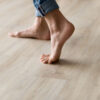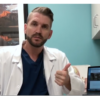So you’re going to have surgery… A practical guide to outpatient foot surgery
Anesthesia: Anesthesia is used to relieve discomfort, reduce anxiety and permit the briefest possible surgical time. Most outpatient cases are performed under sedation, which is a light relaxing medication designed to keep you comfortable and blissfully unaware. General anesthesia is sometimes needed for more complex or invasive procedures and creates a more profound effect. At the end of all surgical procedures a long-lasting local anesthetic is used which will keep you comfortable for up to 18 hours.
Bruising: It is normal to notice bruising after surgery especially toward the heel and ankle. This tends to increase for about a week and will go away by itself. Bruising is a normal part of the healing process but is increased by the use of aspirin-type medications and failure to elevate the leg.
Ice and Elevation: The best way to reduce swelling and bruising is to use ice and elevation. Your leg should be higher than your hip and you should apply an ice bag to the top of the ankle for about 30 minutes at a time. Do not try to balance the ice bag on the area of surgery. For the first week limit the amount of time on your feet to 10 minutes per hour or according to Dr. Yetter’s instructions.
Pain and Medication: Take all prescription pain medication and antibiotics as instructed. For some people an analgesic such as acetaminophen, aspirin, ibuprofen or naproxyn is useful for mild pain relief (if your stomach doesn’t object). A daily multi-vitamin after your surgery can help healing.
Driving: You will not be allowed to drive the day of outpatient surgery. After that, driving is limited by your ability to safely operate a motor vehicle. Caution and discretion is always advised. You should have someone else drive until you have been advised by your doctor that it is safe for you to do so.
Sutures: Skin takes about 10 days to heal and stitches hold the healing skin edges together. For that reason sutures used in the skin will be removed about 10 days after surgery. It’s very important to keep the surgical site and sutured area dry until your doctor has removed the stitches. The stitches used on the inside of the surgical site (beneath the skin) will dissolve on their own.
Pins and Screws: Pins and screws are used to hold two bones together or maintain proper positioning of repair work done to a bone. Screws are designed to stay in the body and can be removed if necessary. Pins are temporary in nature and are usually removed when healing is complete. It is important to wear the post-operative shoe or boot at all times to protect the pin and keep it from bending. Excessive bending or flexing the pin can cause it to break, cause pain and compromise the stability of the surgical repair.
Bandages: Do not remove the dressing unless instructed to do so by the doctor. Your dressing will be covered by a loose tube-sock, which helps to keep it clean. Do not wear your own socks until instructed to do so. Excessive pressure or constriction can damage or irritate the surgical site.
Walking aids: After surgery a special shoe or boot protects your foot. This rigid sole is designed to prevent your foot from flexing. You MUST use this shoe at all times to prevent injury to the surgical site. Some people find it more comfortable to sleep with the postoperative shoe on as it reduces pressure from the blanket. You may be instructed to use crutches, walker or a wheelchair to keep pressure off of the foot.
Return to Activities: Dr. Yetter will have you return to your normal activities as quickly as possible depending on the procedure. The goal is to have a relatively uneventful surgical course which requires prudent decisions and compromises.
Final Words: The body can only heal at a certain speed. Skin can mend in seven to ten days but bone takes eight weeks or longer! There is no short-cut to this process. It is foolish and short sighted to rush back to your regular activities and jeopardize the surgical result. More often than not patients who fail to follow proper instructions and are overactive too early during their post-operative course end up actually extending their healing and recovery time due to complications. With that in mind a proper period of rehabilitation is required for all of us to heal properly.





